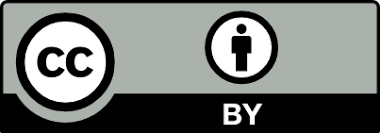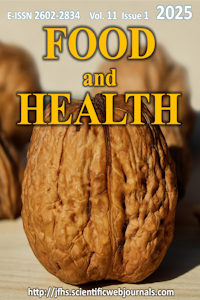Screening of the process parameters for vacuum microwave-assisted extraction of bioactive compounds from amaranth flowers
Abstract
In this study, a series of trial experiments were carried out to determine the optimal extraction parameter ranges for betalains, phenolic compounds, and antioxidants from amaranth (Amaranthus caudatus L.) flowers during the vacuum-microwave extraction (VMAE). VMAE reduces thermal degradation and oxidation risks compared to traditional extraction methods, improving extraction efficiency for thermosensitive and oxygen-sensitive compounds. Since there is no prior study in the literature about optimisation of the extraction conditions of vacuum microwave-assisted extraction of betalains and other bioactive materials in amaranth flowers, this pre-study was essential. The experimental plan was designed according to different ethanol concentrations (20%-40%-60%), extraction periods (5-8-12 min), and pressures (100-450 mmHg). Subsequently, the total betalain content (TBC), total phenolic content (TPC), and total antioxidant capacity (TAC) values were measured. The aim was to identify the minimum and optimal conditions for extracting bioactive compounds using the VMAE method for further optimization studies. The experimental results showed that for the maximization of TBC, the conditions were 40% ethanol concentration, 8 min, and 450 mmHg pressure. Conversely, for the maximisation of TPC and TAC, the conditions were 20% ethanol concentration, 12 min, and 450 mmHg pressure. Scanning Electron Microscopy (SEM) analysis was performed to understand the general effects of VMAE on the morphology of the flower samples. These findings provided valuable insights for the future optimisation of extraction processes from amaranth flowers or similar betalain-containing plants using VMAE, contributing to the enhancement of extraction efficiency and the potential utilization of these bioactive compounds in various food applications.
Keywords
Green Extraction Methods Nutraceuticals from Amaranth Antioxidant Capacity Amaranthus caudatus L. Betalains Phenolic compounds Scanning electron microscopy
Supporting Institution
TÜBİTAK
Project Number
222O444
References
- Akdeniz, B., Sumnu, G., & Sahin, S. (2018). Microencapsulation of phenolic compounds extracted from onion (Allium cepa) skin. Journal of Food Process and Preservation, 42(7). https://doi.org/10.1111/jfpp.13648
- Apak, R., Güçlü, K., Demirata, B., Ozyürek, M., Çelik, S., Bektaşoğlu, B., Berker, K., & Ozyurt, D. (2007). Comparative evaluation of various total antioxidant capacity assays applied to phenolic compounds with the CUPRAC assay. Molecules, 12, 1496-1547. https://doi.org/10.3390/12071496
- Cardoso-Ugarte, G.A., Sosa-Morales, M.S., Ballard, T., Liceaga, A., & Martin-Gonzalez, M.F.S. (2014). Microwave-assisted extraction of betalains from red beet (Beta vulgaris). LWT - Food Science and Technology, 59, 276-282. https://doi.org/10.1016/j.lwt.2014.05.025
- Castellanos-Santiago, E., & Yahia, E.M. (2008). Identification and quantification of betalains from the fruits of 10 Mexican prickly pear cultivars by high-performance liquid chromatography and electrospray ionization mass spectrometry. Journal of Agricultural and Food Chemistry, 56(14), 5758-5764. https://doi.org/10.1021/jf800362t
- Filip, S., Pavlić, B., Vidović, S., Vladić, J., & Zeković, Z. (2017). Optimization of Microwave-assisted extraction of polyphenolic compounds from Ocimum basilicum by response surface methodology. Food Analytical Methods, 10, 2270–2280. https://doi.org/10.1007/s12161-017-0792-7
- Govender, N., & Baijnath, H. (2022). Amaranth (Amaranthus). In Handbook of Phytonutrients in Indigenous Fruits and Vegetables. CABI Publishing. https://doi.org/10.1079/9781789248067.0004
- Gu, H., Chen, F., Zhang, Q., & Zang, J. (2016). Application of ionic liquids in vacuum microwave-assisted extraction followed by macroporous resin isolation of three flavonoids rutin, hyperoside and hesperidin from Sorbus tianschanica leaves. Journal of Chromatography B: Analytical Technologies in the Biomedical and Life Sciences, 1014, 45-55. https://doi.org/10.1016/j.jchromb.2016.01.045
- Hiranvarachat, B., Devahastin, S., & Soponronnarit, S. (2015). Comparative evaluation of atmospheric and vacuum microwave-assisted extraction of bioactive compounds from fresh and dried Centella asiatica L. leaves. International Journal of Food Science and Technology, 50, 750-757. https://doi.org/10.1111/ijfs.12669
- Li, H., Deng, Z., Liu, R., Zhu, H., Draves, J., Marcone, M., Sun, Y., & Tsao, R. (2015). Characterization of phenolics, betacyanins, and antioxidant activities of the seed, leaf, sprout, flower, and stalk extracts of three Amaranthus species. Journal of Food Composition and Analysis, 37, 75-81. ttps://doi.org/10.1016/j.jfca.2014.09.003
- Lovrić, V., Putnik, P., Kovačević, D., Jukić, M., & Dragović-Uzelac, V. (2017). Effect of microwave-assisted extraction on the phenolic compounds and antioxidant capacity of blackthorn flowers. Food Technology and Biotechnology, 55(2), 243-250. https://doi.org/10.17113/ftb.55.02.17.4687
- Martinez-Lopez, A., Millan-Linares, M.C., Rodriguez-Martin, N.M., Millan, F., & Montserrat-de la Paz, S. (2020). Nutraceutical value of kiwicha (Amaranthus caudatus L.). Journal of Functional Foods, 65. https://doi.org/10.1016/j.jff.2019.103735
- Martinez-Lopez, A., Millan-Linares, M.C., Rodriguez-Martin, N.M., Millan, F., & Montserrat-de la Paz, S. (2020). Nutraceutical value of kiwicha (Amaranthus caudatus L.). Journal of Functional Foods, 65. https://doi.org/10.1016/j.jff.2019.103735
- Martínez-López, A., Millán-Linares, M., Rodríguez-Martín, N., Millán, F., & La Paz, M. (2017). Extensive profiling of three varieties of Opuntia spp. fruit for innovative food ingredients. Food Research International, 101, 259-265. https://doi.org/10.1016/j.foodres.2017.09.024
- Peter, K., & Gandhi, P. (2017). Rediscovering the therapeutic potential of Amaranthus species: A review. Egyptian Journal of Basic and Applied Sciences, 4(3), 196-205. https://doi.org/10.1016/j.ejbas.2017.05.001
- Roriz, C.L., Barros, L., Carvalho, A.M., Santos-Buelga, C., & Ferreira, I.C.F.R. (2021). Chemical and bioactive features of Amaranthus caudatus L. flowers and optimized ultrasound-assisted extraction of betalains. Foods, 10(779).
- Sayeed, R., & Thakur, M. (2019). Comparative studies on extraction methods of betalain content and antioxidant activity of biocolorant obtained from Celosia cristata L. flowers. Medicinal Plants - International Journal of Phytomedicines and Related Industries. https://doi.org/10.5958/0975-6892.2019.00051.0
- Sharma, A., Mazumdar, B., & Keshav, A. (2023). Valorization of unsalable Amaranthus tricolour leaves by microwave-assisted extraction of betacyanin and betaxanthin. Biomass Conversion and Biorefinery, 13(2), 1251-1267. https://doi.org/10.1007/s13399-020-01267-y
- Skenderidis, P., Leontopoulos, S., Petrotos, K., & Giavasis, I. (2021). Vacuum microwave-assisted aqueous extraction of polyphenolic compounds from avocado (Persea americana) solid waste. Sustainability, 13(4), 2166. https://doi.org/10.3390/su13042166
- Thirugnanasambandham, K., & Sivakumar, V. (2017). Microwave assisted extraction process of betalain from dragon fruit and its antioxidant activities. Journal of the Saudi Society of Agricultural Sciences, 16(1), 41-48. https://doi.org/10.1016/j.jssas.2015.02.001
- Wang, J.X., Xiao, X.H., & Li, G.K. (2008). Study of vacuum microwave-assisted extraction of polyphenolic compounds and pigment from Chinese herbs. Journal of Chromatography A, 1198-1199, 45-53. https://doi.org/10.1016/j.chroma.2008.05.045
- Xiao, X.-H., Song, W., Wang, J.-Y., & Li, G.-K. (2012). Microwave-assisted extraction performed in low temperature and in vacuo for the extraction of labile compounds in food samples. Analytica Chimica Acta, 712, 85-93. https://doi.org/10.1016/j.aca.2011.11.034
- Xiao, X.-H., Wang, J.-X., Wang, G., Wang, J.-Y., & Li, G.-K. (2009). Evaluation of vacuum microwave-assisted extraction technique for the extraction of antioxidants from plant samples. Journal of Chromatography A, 1216(51), 8867-8873. https://doi.org/10.1016/j.chroma.2009.10.087
- Yiğit, Ü., Yolaçaner, E.T., Hamzalıoğlu, A., & Gökmen, V. (2022). Optimization of microwave-assisted extraction of anthocyanins in red cabbage by response surface methodology. Journal of Food Process and Preservation, 46(1). https://doi.org/10.1111/jfpp.16120
Screening of the process parameters for vacuum microwave-assisted extraction of bioactive compounds from amaranth flowers
Abstract
In this study, a series of trial experiments were carried out to determine the optimal extraction parameter ranges for betalains, phenolic compounds, and antioxidants from amaranth (Amaranthus caudatus L.) flowers during the vacuum-microwave extraction (VMAE). VMAE reduces thermal degradation and oxidation risks compared to traditional extraction methods, improving extraction efficiency for thermosensitive and oxygen-sensitive compounds. Since there is no prior study in the literature about optimisation of the extraction conditions of vacuum microwave-assisted extraction of betalains and other bioactive materials in amaranth flowers, this pre-study was essential. The experimental plan was designed according to different ethanol concentrations (20%-40%-60%), extraction periods (5-8-12 min), and pressures (100-450 mmHg). Subsequently, the total betalain content (TBC), total phenolic content (TPC), and total antioxidant capacity (TAC) values were measured. The aim was to identify the minimum and optimal conditions for extracting bioactive compounds using the VMAE method for further optimization studies. The experimental results showed that for the maximization of TBC, the conditions were 40% ethanol concentration, 8 min, and 450 mmHg pressure. Conversely, for the maximisation of TPC and TAC, the conditions were 20% ethanol concentration, 12 min, and 450 mmHg pressure. Scanning Electron Microscopy (SEM) analysis was performed to understand the general effects of VMAE on the morphology of the flower samples. These findings provided valuable insights for the future optimisation of extraction processes from amaranth flowers or similar betalain-containing plants using VMAE, contributing to the enhancement of extraction efficiency and the potential utilization of these bioactive compounds in various food applications.
Keywords
Green Extraction Methods Nutraceuticals from Amaranth Antioxidant Capacity Amaranthus caudatus L. Betalains Phenolic compounds Scanning electron microscopy
Project Number
222O444
References
- Akdeniz, B., Sumnu, G., & Sahin, S. (2018). Microencapsulation of phenolic compounds extracted from onion (Allium cepa) skin. Journal of Food Process and Preservation, 42(7). https://doi.org/10.1111/jfpp.13648
- Apak, R., Güçlü, K., Demirata, B., Ozyürek, M., Çelik, S., Bektaşoğlu, B., Berker, K., & Ozyurt, D. (2007). Comparative evaluation of various total antioxidant capacity assays applied to phenolic compounds with the CUPRAC assay. Molecules, 12, 1496-1547. https://doi.org/10.3390/12071496
- Cardoso-Ugarte, G.A., Sosa-Morales, M.S., Ballard, T., Liceaga, A., & Martin-Gonzalez, M.F.S. (2014). Microwave-assisted extraction of betalains from red beet (Beta vulgaris). LWT - Food Science and Technology, 59, 276-282. https://doi.org/10.1016/j.lwt.2014.05.025
- Castellanos-Santiago, E., & Yahia, E.M. (2008). Identification and quantification of betalains from the fruits of 10 Mexican prickly pear cultivars by high-performance liquid chromatography and electrospray ionization mass spectrometry. Journal of Agricultural and Food Chemistry, 56(14), 5758-5764. https://doi.org/10.1021/jf800362t
- Filip, S., Pavlić, B., Vidović, S., Vladić, J., & Zeković, Z. (2017). Optimization of Microwave-assisted extraction of polyphenolic compounds from Ocimum basilicum by response surface methodology. Food Analytical Methods, 10, 2270–2280. https://doi.org/10.1007/s12161-017-0792-7
- Govender, N., & Baijnath, H. (2022). Amaranth (Amaranthus). In Handbook of Phytonutrients in Indigenous Fruits and Vegetables. CABI Publishing. https://doi.org/10.1079/9781789248067.0004
- Gu, H., Chen, F., Zhang, Q., & Zang, J. (2016). Application of ionic liquids in vacuum microwave-assisted extraction followed by macroporous resin isolation of three flavonoids rutin, hyperoside and hesperidin from Sorbus tianschanica leaves. Journal of Chromatography B: Analytical Technologies in the Biomedical and Life Sciences, 1014, 45-55. https://doi.org/10.1016/j.jchromb.2016.01.045
- Hiranvarachat, B., Devahastin, S., & Soponronnarit, S. (2015). Comparative evaluation of atmospheric and vacuum microwave-assisted extraction of bioactive compounds from fresh and dried Centella asiatica L. leaves. International Journal of Food Science and Technology, 50, 750-757. https://doi.org/10.1111/ijfs.12669
- Li, H., Deng, Z., Liu, R., Zhu, H., Draves, J., Marcone, M., Sun, Y., & Tsao, R. (2015). Characterization of phenolics, betacyanins, and antioxidant activities of the seed, leaf, sprout, flower, and stalk extracts of three Amaranthus species. Journal of Food Composition and Analysis, 37, 75-81. ttps://doi.org/10.1016/j.jfca.2014.09.003
- Lovrić, V., Putnik, P., Kovačević, D., Jukić, M., & Dragović-Uzelac, V. (2017). Effect of microwave-assisted extraction on the phenolic compounds and antioxidant capacity of blackthorn flowers. Food Technology and Biotechnology, 55(2), 243-250. https://doi.org/10.17113/ftb.55.02.17.4687
- Martinez-Lopez, A., Millan-Linares, M.C., Rodriguez-Martin, N.M., Millan, F., & Montserrat-de la Paz, S. (2020). Nutraceutical value of kiwicha (Amaranthus caudatus L.). Journal of Functional Foods, 65. https://doi.org/10.1016/j.jff.2019.103735
- Martinez-Lopez, A., Millan-Linares, M.C., Rodriguez-Martin, N.M., Millan, F., & Montserrat-de la Paz, S. (2020). Nutraceutical value of kiwicha (Amaranthus caudatus L.). Journal of Functional Foods, 65. https://doi.org/10.1016/j.jff.2019.103735
- Martínez-López, A., Millán-Linares, M., Rodríguez-Martín, N., Millán, F., & La Paz, M. (2017). Extensive profiling of three varieties of Opuntia spp. fruit for innovative food ingredients. Food Research International, 101, 259-265. https://doi.org/10.1016/j.foodres.2017.09.024
- Peter, K., & Gandhi, P. (2017). Rediscovering the therapeutic potential of Amaranthus species: A review. Egyptian Journal of Basic and Applied Sciences, 4(3), 196-205. https://doi.org/10.1016/j.ejbas.2017.05.001
- Roriz, C.L., Barros, L., Carvalho, A.M., Santos-Buelga, C., & Ferreira, I.C.F.R. (2021). Chemical and bioactive features of Amaranthus caudatus L. flowers and optimized ultrasound-assisted extraction of betalains. Foods, 10(779).
- Sayeed, R., & Thakur, M. (2019). Comparative studies on extraction methods of betalain content and antioxidant activity of biocolorant obtained from Celosia cristata L. flowers. Medicinal Plants - International Journal of Phytomedicines and Related Industries. https://doi.org/10.5958/0975-6892.2019.00051.0
- Sharma, A., Mazumdar, B., & Keshav, A. (2023). Valorization of unsalable Amaranthus tricolour leaves by microwave-assisted extraction of betacyanin and betaxanthin. Biomass Conversion and Biorefinery, 13(2), 1251-1267. https://doi.org/10.1007/s13399-020-01267-y
- Skenderidis, P., Leontopoulos, S., Petrotos, K., & Giavasis, I. (2021). Vacuum microwave-assisted aqueous extraction of polyphenolic compounds from avocado (Persea americana) solid waste. Sustainability, 13(4), 2166. https://doi.org/10.3390/su13042166
- Thirugnanasambandham, K., & Sivakumar, V. (2017). Microwave assisted extraction process of betalain from dragon fruit and its antioxidant activities. Journal of the Saudi Society of Agricultural Sciences, 16(1), 41-48. https://doi.org/10.1016/j.jssas.2015.02.001
- Wang, J.X., Xiao, X.H., & Li, G.K. (2008). Study of vacuum microwave-assisted extraction of polyphenolic compounds and pigment from Chinese herbs. Journal of Chromatography A, 1198-1199, 45-53. https://doi.org/10.1016/j.chroma.2008.05.045
- Xiao, X.-H., Song, W., Wang, J.-Y., & Li, G.-K. (2012). Microwave-assisted extraction performed in low temperature and in vacuo for the extraction of labile compounds in food samples. Analytica Chimica Acta, 712, 85-93. https://doi.org/10.1016/j.aca.2011.11.034
- Xiao, X.-H., Wang, J.-X., Wang, G., Wang, J.-Y., & Li, G.-K. (2009). Evaluation of vacuum microwave-assisted extraction technique for the extraction of antioxidants from plant samples. Journal of Chromatography A, 1216(51), 8867-8873. https://doi.org/10.1016/j.chroma.2009.10.087
- Yiğit, Ü., Yolaçaner, E.T., Hamzalıoğlu, A., & Gökmen, V. (2022). Optimization of microwave-assisted extraction of anthocyanins in red cabbage by response surface methodology. Journal of Food Process and Preservation, 46(1). https://doi.org/10.1111/jfpp.16120
Details
| Primary Language | English |
|---|---|
| Subjects | Food Engineering, Food Sustainability |
| Journal Section | Research Article |
| Authors | |
| Project Number | 222O444 |
| Early Pub Date | December 29, 2024 |
| Publication Date | January 10, 2025 |
| Submission Date | July 10, 2024 |
| Acceptance Date | December 13, 2024 |
| Published in Issue | Year 2025 Volume: 11 Issue: 1 |
Journal is licensed under a
CreativeCommons Attribtion-ShareAlike 4.0 International Licence 


Diamond Open Access refers to a scholarly publication model in which journals and platforms do not charge fees to either authors or readers.
Open Access Statement:
This is an open access journal which means that all content is freely available without charge to the user or his/her institution. Users are allowed to read, download, copy, distribute, print, search, or link to the full texts of the articles, or use them for any other lawful purpose, without asking prior permission from the publisher or the author. This is in accordance with the BOAI definition of open access.
Archiving Policy:
Archiving is done according to ULAKBİM "DergiPark" publication policy (LOCKSS).

